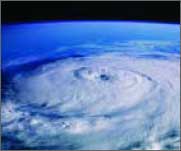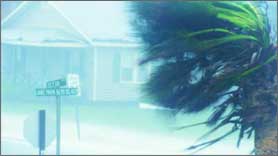A hurricane is a severe tropical storm that forms in the southern Atlantic Ocean, Caribbean Sea, Gulf of Mexico or the eastern Pacific Ocean. With violent winds starting at 74 miles per hour, it produces incredible waves, torrential rains and floods. Hurricane hazards come in many forms, so it's important for your family to be prepared and have a plan that covers every situation.
HURRICANE SAFETY TIPS
- Determine if you live in an evacuation area. Know your home's vulnerability to storm surge, flooding and wind. Have a plan based on this information.
- At the beginning of hurricane season, in early June, replace batteries, and check your supplies and food rations. Replenish if needed.
- During hurricane season, monitor the tropics and NOAA Weather Radio.
- If a storm is on the horizon, seek advice from local authorities. Evacuate if ordered.
EVACUATION PROCEDURES
Experts say you should not leave town before a hurricane hits. If told to do so, evacuate immediately and follow these instructions:


| 1. Plan to go
somewhere near your home; a motel or friend's house a
few miles away. Do not plan to leave the city or state.
2. Stay tuned to a battery-powered radio and follow the instructions of local emergency officials. 3. Wear protective clothing and sturdy shoes. 4. Take your Disaster Supply Kit. 5. Lock your home. 6. Use travel routes specified by local authorities. Don't use shortcuts because certain areas may be impassable or dangerous.
|
7. Shut off water,
gas and electricity (at the main fuse box) before
leaving. Shutting them off guards your appliances against power surges
and protects you from electrocution.
8. Before you leave, collect valuables and things you will need. For example; jewelry, credit cards and checkbooks. 9. Post a note telling others when you left and where you are going. 10. Make arrangements for your pets. 11. Elevate furniture to protect it from flooding or move it to a higher floor. 12. Bring outdoor objects inside.
|